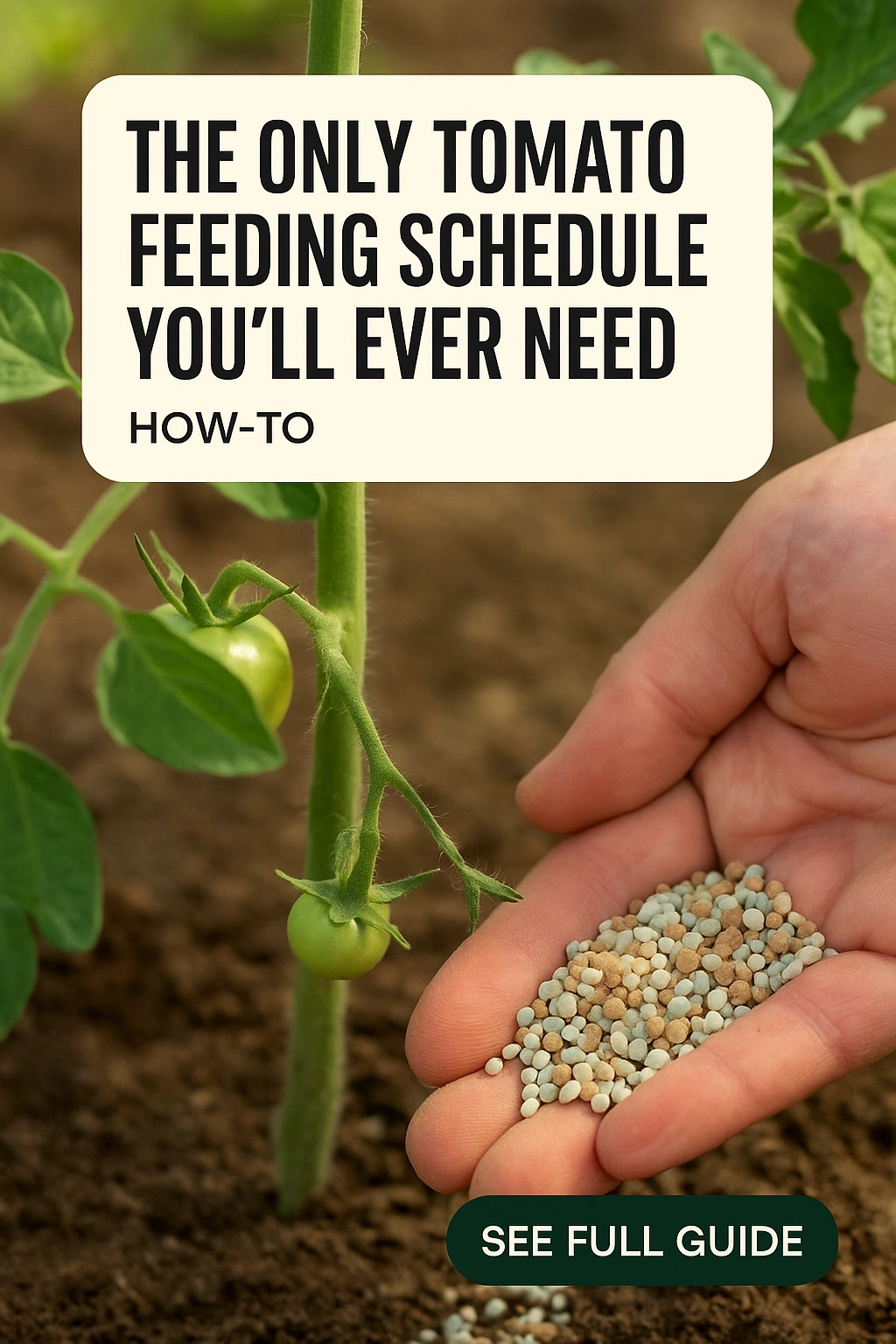
Are you tired of lackluster tomato harvests? Discover the only tomato feeding schedule you’ll ever need to cultivate robust plants and maximize your yield. From selecting the right fertilizers to timing your feedings, this comprehensive guide covers every essential detail to help you grow healthy, fruitful tomato plants.
Understanding Tomato Nutritional Needs
Tomatoes are heavy feeders that require a balanced supply of nutrients to grow strong and produce abundant fruit. The primary nutrients needed are nitrogen, phosphorus, and potassium, often referred to as N-P-K. Each nutrient plays a unique role in plant health:
- Nitrogen: Essential for leafy growth and overall plant vigor.
- Phosphorus: Vital for root development and flowering.
- Potassium: Key for fruit quality, disease resistance, and overall plant health.
Choosing the Right Fertilizer
To meet your tomatoes’ nutritional needs, selecting the right fertilizer is crucial. Look for fertilizers specifically formulated for tomatoes or those with a balanced N-P-K ratio. Organic options such as compost, worm castings, or fish emulsion can also be beneficial.
Creating a Feeding Schedule
Establishing a consistent feeding schedule is essential for optimal tomato growth. A well-planned regimen will ensure that your plants receive nutrients at critical growth stages. Below is a structured feeding timeline to guide you throughout the growing season.
Pre-Planting Phase
Before planting, prepare your soil by incorporating organic matter and fertilizers. Testing your soil pH is also advisable; tomatoes prefer a slightly acidic to neutral pH (6.0 to 7.0).
- Mix well-rotted compost into the soil.
- Apply a balanced fertilizer, such as a 10-10-10 formula, to ensure a good nutrient base.
Transplanting Stage
When transplanting seedlings into the garden, it’s important to provide them with an initial boost. Use a liquid fertilizer diluted to half strength to reduce the risk of burning tender roots.
- Feed with a 5-10-10 fertilizer for a good start.
- Water thoroughly after feeding to promote nutrient uptake.
Mid-Growth Nutritional Support
After your tomatoes are established, their nutrient needs will evolve as they transition from vegetative to flowering stages. This phase is crucial for fruit development, and proper feeding will enhance yield.
Weekly Fertilization
During the mid-growth stage, feeding your tomato plants weekly can significantly improve growth. Use a balanced fertilizer or a fertilizer high in phosphorus once the plants begin to flower.
- Consider switching to a formula with higher phosphorus content, like 5-15-10.
- Supplement with liquid seaweed or fish emulsion every two weeks for additional micronutrients.
Signs of Nutrient Deficiency
Recognizing signs of nutrient deficiencies early can save your plants from serious damage. Common symptoms include:
- Yellowing leaves: Often a sign of nitrogen deficiency.
- Stunted growth: Could indicate a lack of phosphorus.
- Poor fruit development: Often linked to insufficient potassium.
Feeding During Fruiting
As tomatoes begin to set fruit, your focus should shift to maintaining their health and maximizing fruit quality. The right nutrients will ensure that your plants remain productive.
Fertilizer Adjustments
During the fruiting stage, reduce nitrogen levels to prevent excessive leaf growth at the expense of fruit development. Instead, increase potassium intake to enhance fruit size and taste.
- Switch to a low-nitrogen, high-potassium fertilizer, such as a 3-4-6 ratio.
- Continue with bi-weekly feedings to support ongoing fruit development.
Watering and Feeding Synchronization
Timely watering is as important as feeding. Ensure consistent moisture levels, as fluctuating conditions can lead to blossom end rot or cracking fruit.
- Water deeply but infrequently to encourage deep root growth.
- Feed immediately after watering to maximize nutrient absorption.
Final Stages and Harvesting
As your tomatoes approach harvest time, adjusting your feeding routine is essential to ensure the best flavor and quality of your fruit. Excessive nutrients can lead to bland-tasting tomatoes.
Last Feeding Before Harvest
Stop fertilizing about four weeks before you anticipate harvesting your tomatoes. This practice allows the plants to use up excess nutrients and focus on ripening the fruit.
- Flush the soil with water to remove any remaining fertilizer.
- Continue regular watering to support the ripening process.
Frequently Asked Questions (FAQs)
How often should I fertilize my tomato plants?
Fertilize your tomato plants every 2-4 weeks during the growing season, adjusting based on their growth stage and nutrient needs.
Can I use homemade compost as fertilizer for my tomatoes?
Yes, homemade compost is an excellent source of nutrients and can be used to enrich the soil before planting and during the growing season.
What are the best organic fertilizers for tomatoes?
Some of the best organic fertilizers for tomatoes include compost, fish emulsion, bone meal, and kelp meal, each providing a balanced nutrient profile.
What should I do if my tomato plants show signs of nutrient deficiency?
If you notice signs of nutrient deficiency, adjust your feeding regimen to include a balanced fertilizer tailored to the specific nutrient your plants are lacking.
Is it possible to over-fertilize tomato plants?
Yes, over-fertilizing can lead to nutrient burn and poor fruit quality. Always follow recommended guidelines and observe your plants for signs of stress.
